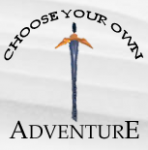
Wind patterns over the North Atlantic Ocean had a huge effect on the colonization and history of the Americas because, after all, all they had were sailing ships. The circular, clockwise winds meant that it was easiest to sail south and west from Europe, and when you did, the first place you arrived at in the New World was the Caribbean or the northern edge of South America. This helps explains the first settlements of the Portuguese and Spanish, and why the latecomers, like the British, ended up further north up the coast of North America.
Using wind data from the University Corporation for Atmospheric Research (UCAR) and Google Maps I created an online sailing game I call Mariner AO. The game is pretty simple (basic instructions are here), you tell your ship which direction to go, starting off near Lisbon in Portugal and sail the Atlantic. What makes it interesting is that you can go wherever you like and make your own objectives. All that limits where you can go is the fact that you can only sail within 90 degrees of the wind. It’s very Montessori in that you have choice within limits.
The game is most interesting, I think, if you set objectives like trying to sail the triangular trade route, Europe (Portugal) to Africa (Dakar) to America (Charleston) and back to Europe again. The general clockwise wind pattern is persistent throughout the year, but sometimes you need to wait until the wind changes to be able to reach your objective.
Alistair Boddy-Evans has a nice article on the triangular trade of European manufactured goods to Africa, African slaves to the Americas, and plantation crops back to Europe.
I really like this game because it integrates so much. Atmospheric circulation, slavery, colonization, and even the physics of sailing if you can and want to get into it. In fact, I think it’s enough to base an entire cycle of work around. I’m still taking comments about how to improve the game.


